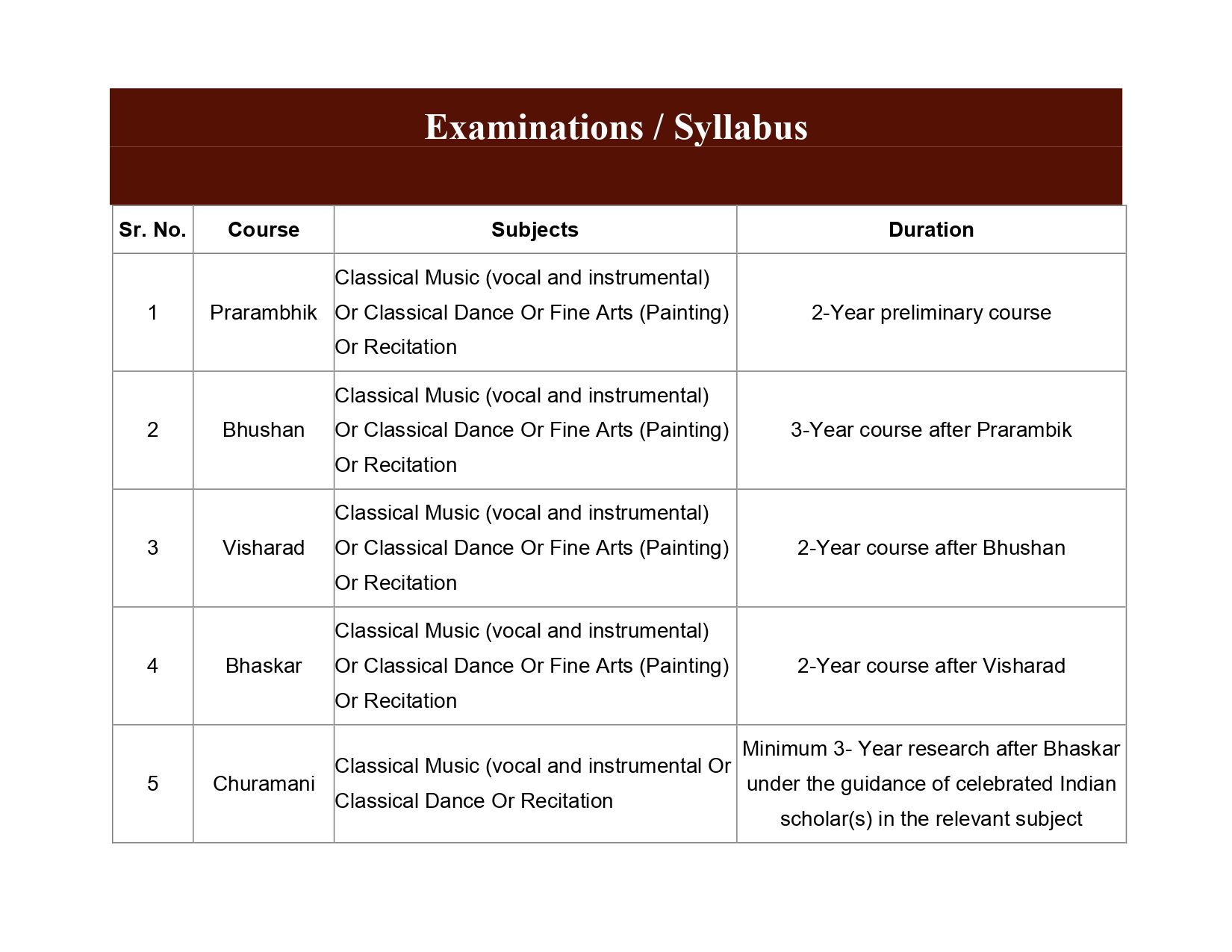Our Courses
We Offer following courses

Bharatnatyam Course
Key Aspects of Bharatanatyam: Bharatanatyam's theoretical foundation is found in the ancient text "Natya Shastra" by Bharata Muni, dating between 200 BCE to 200 CE (over 2000 years old) Origin and History: Bharatanatyam has roots in ancient Tamil Nadu, specifically in the Tanjore district. It's considered the "mother of all Indian classical dances" and has been a part of South Indian temples for centuries. Storytelling: Bharatanatyam uses mudras (hand gestures) to tell stories, express emotions, and convey ideas. The dance form also incorporates facial expressions, eye movements, and body language to enrich storytelling. Musicality and Rhythm: The dance is performed with a blend of music, rhythm, and tempo, enhancing the storytelling aspect. Costume and Presentation: Bharatanatyam dancers wear elaborate costumes, often with a blouse, pyjamas, and a shawl or pallu. Makeup and ornaments further enhance the visual appeal of the performance. Types of Movements: Bharatanatyam incorporates various movements, including nrita (pure dance), nritya (dance with expression), and natya (drama). Perfromance Structure: A Bharatanatyam performance typically includes sections like Alarippu (warm-up), Jathiswaram (complex movements), Shabdam (storytelling), Varnam (grand and beautiful), Padam (emotional expression), and Tillana (fast-paced, energetic section). In essence, Bharatanatyam is a captivating art form that blends storytelling, music, and dance to create a visually and emotionally rich experience.
Read More
Drawing and Fine Art Course
Art: Art classes provide a space for creativity and expression, teaching various techniques, media, and art principles. They cultivate critical thinking, problem-solving skills, and a deeper understanding of the visual world. Students develop their observational skills, learn to analyze and interpret art, and ultimately enhance their overall cognitive abilities. Key aspects of art classes: Creative Expression:Art classes offer a unique outlet for self-expression, allowing students to communicate ideas and emotions through visual means. Skill Development:Students learn a variety of art techniques, including drawing, painting, sculpting, and more, improving their fine motor skills and hand-eye coordination. Cognitive Enhancement:Art classes stimulate creativity, critical thinking, and problem-solving abilities. Knowledge of Art Principles:Students learn about elements of art (like line, shape, color) and principles of design, deepening their understanding of the visual world. Appreciation for Art:Art classes foster appreciation for different art forms and cultures, expanding students' horizons. Well-being: Engaging with art can improve mood, reduce stress, and enhance overall physical and psychological well-being.
Read MoreClass Time Table
This Bharatanatyam class introduces students to the foundational techniques, hand gestures (mudras), postures, basic adavus (steps), and expressions (abhinaya) that form the core of this traditional art. Dancers will develop strength, coordination, rhythm sense, and a deep cultural appreciation for storytelling through movement.
Step into the world of Bharatanatyam, a mesmerizing classical Indian dance form that breathes life into ancient tales and spiritual narratives. In this class, you will not only master its intricate footwork and graceful movements but also learn the profound art of 'abhinaya' – expressive storytelling.
Basic drawing techniques (lines, shapes, shading, texture), Principles of design and Composition. Use of different mediums (pencil, charcoal, crayons, watercolor, etc.). Color theory and mixing. Still life, landscapes, abstract art, and imaginative drawing. Step-by-step projects to build technique and creativity. Classes are structured to be both educational and fun, offering hands-on practice and individual guidance. No prior experience is needed—just curiosity and a love for art!
By the end of the course, students will have a portfolio of original artworks and a strong foundation to grow further as artists.
